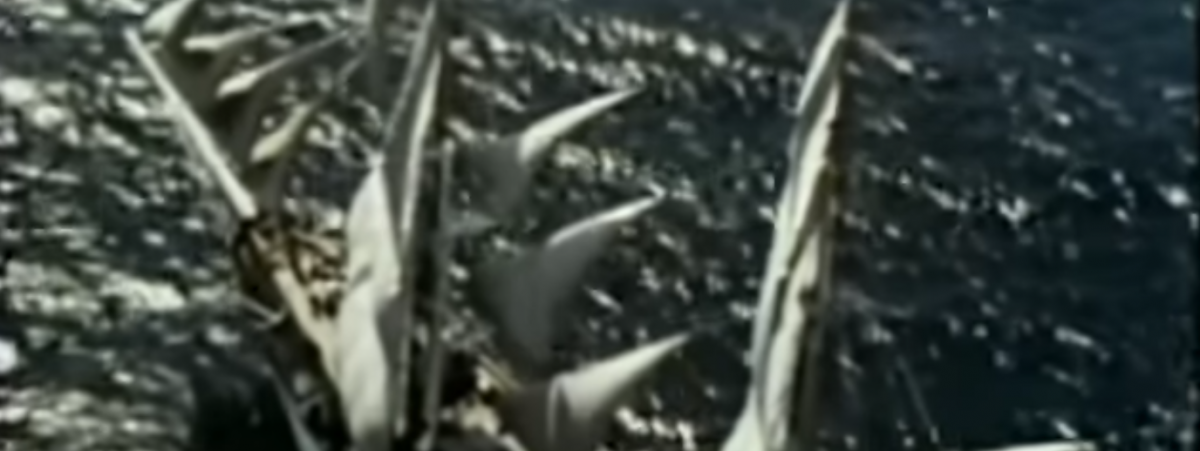Forum › Forums › General Discussions › Onedin Polls › RE: Onedin Polls
Have you ever noticed those horizontal bands on a square sail, and how those bands have "strings" dangling from then every few feet across? Those bands are Reefing bands. (Excuse my terminology if I get something a little off; it's been ages since I've talked about this in my living history group.) And those "strings" are Reefing Points: pieces of line (rope) that run through grommets in the sail so the line dangles on the fore and aft sides of the sail.
Those are used to reef, or "shorten sail" so the ship can keep some sail rather than furling the whole sail and leaving the yard "bare". You heave in the sail just as R described until you reach one of the reefing bands. (Some large sails such as the topgallant can have upwards of three reefing bands. The captain will determine just how much sail he wants to leave out, and that determines which reefing band you'll use.)
Once you have the reefing band at hand, those reefing points I mentioned are used to tie the sail around the yard; the line is tied off with a square or "reef" knot (not a "granny" knot, which looks similar, but will slip loose). That's how you reef and tie off a sail. The captain would order sails reefed if the weather was turning harsh and carrying full sail would result in either a broken mast, snapped rigging, or worse. If things got really bad then all sails would be furled and the ship would continue under "bare poles"; the wind would be strong enough that the rigging would catch enough of it to push the ship along. (But we're talking winds near hurricane force now.)
The captain could also order a sail – usually one of the forward, lower sails such as a lower topsail – to be "goose-winged". This is when the weather side of the sail (the side taking the brunt of the wind) would be completely furled, and the lee side (the part of the sail on the other side of the ship, where the mast and rigging would block some of the force) would be reefed; you had a triangular portion of a square sail exposed, so you weren't under bare poles. It offered a little more speed and that gave you a little more rudder control.
As for sluicing sails… I believe that's when buckets of water (and this would be sea water) are hauled up the mast and poured on the sails to wet them down. As most people are aware, a wet cloth will catch and hold the wind better than a dry one, and the same holds true for sails. During the War of 1812, in one engagement, the USS CONSTITUTION used this method to catch a little more wind and outrun a heavier armed British warship. (I believe Onedin used this trick in an episode or two to overtake another ship.)
Dino.
—–Original Message—–
From: Lee Bonnifield <lee78@localnet.com>
To: shiponedingroup <shiponedingroup@yahoogroups.com>
Sent: Wed, May 1, 2013 10:56 pm
Subject: Re: [shiponedingroup] Re: Onedin Polls
I'm not clear on what you do up there — raise the
bottom edge of square sails (reef)? tie it (with what?) to yard
(dictionary says sailor rolls it up hence he's called "reefer".) Untie
it? And why sluice sails S?N? ?
[Non-text portions of this message have been removed]
